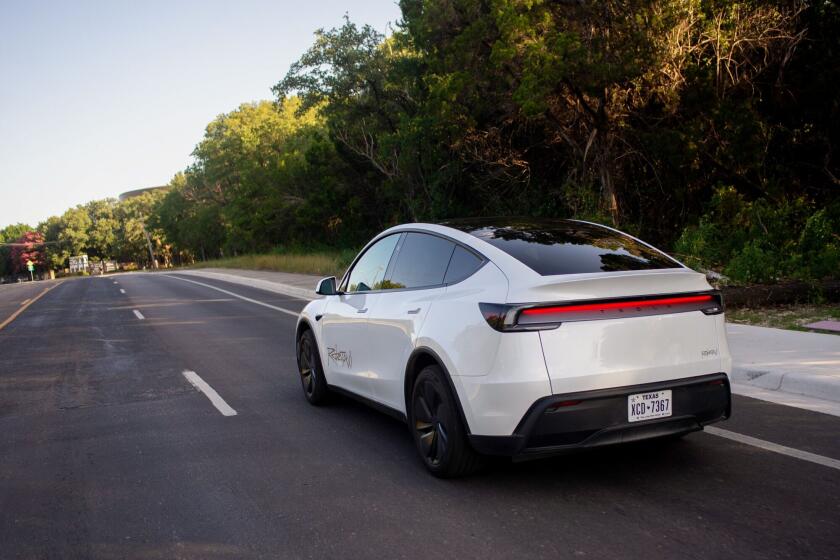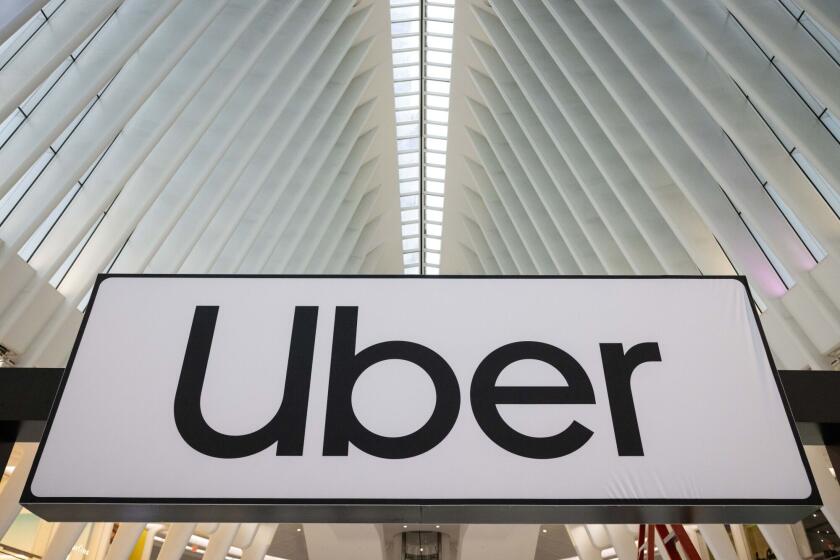Transportation Planning for 21st Century Begins in O.C. : Commuting: ‘Smog fees’ for driving during rush hour are among the ideas proposed in a new study.
- Share via
SANTA ANA — Charge Orange County motorists “smog fees” if they drive during rush hour. That’s one strategy local transportation officials should consider as they move toward a plan for the next century, according to a new report issued Monday.
Such market-based strategies could help air quality and reduce congestion, said the report, a compilation of interviews with consultants and local transportation officials. The study was submitted Monday to the Orange County Transportation Authority.
Other recommendations for the agency’s embryonic 2020 Vision plan for the future include focusing more attention on the needs of commuters who travel between Orange County and the Long Beach, South Bay and Los Angeles International Airport areas.
The results will help form the basis of the 2020 Vision statement, a project initiated by OCTA Chairman Gary L. Hausdorfer that seeks to unite the agency’s various plans for highways, streets and mass transit into a single document by year’s end.
Charging commuters a few extra dollars a day for prime-time motoring or for driving vehicles that pollute more than others was proposed by a joint public-private task force last year. So far, OCTA has left that issue to regional regulators, including the South Coast Air Quality Management District, believing that one city or county should not act alone in imposing such fees.
The smog fee recommendation and other 2020 Vision findings come as OCTA is about to conduct a major marketing study of urban rail service and sponsor a March 6 workshop in Irvine on rail transportation.
The $180,000 market study for urban rail, meanwhile, was awarded without competitive bidding Monday to Gannett Fleming, the firm now conducting feasibility studies for an initial 10- to 20-mile route in central Orange County. The marketing aspect of the study will be done by the polling company of J. Moore Methods and the political consulting firm Townsend, Hermocillo, Raimundo and Usher. The Townsend and Moore firms both handled the successful campaign for Measure M, the half-cent, countywide sales tax for traffic improvements approved by voters in 1990.
OCTA officials denied that the lack of competitive bidding showed favoritism. They argued that the firms involved were the best qualified because they’re already familiar with Orange County and with Measure M transportation projects.
The marketing study also will explore whether those most likely to use urban rail would prefer destinations such as Santa Ana’s Fiesta Market Place or more upscale areas such as South Coast Plaza, and at what cost.
The recommendation that OCTA consider smog fees is one of several from consultant Debbie Whitmore and from questionnaire responses by transportation officials and city managers throughout Orange County.
The summary report to the OCTA board on Monday suggests that the agency develop a better understanding of the county’s changing population, which could help target people most likely because of economics and culture to use mass transit.
“I’m pleased with the effort,” Hausdorfer said after Monday’s meeting. “We’re taking our time. The final document is going to be thoughtful and reasoned. We have not tried to manipulate the result.”
The public will be invited to attend several workshops on the 2020 Vision statement in the next few months, Hausdorfer said.
More to Read
Sign up for Essential California
The most important California stories and recommendations in your inbox every morning.
You may occasionally receive promotional content from the Los Angeles Times.













